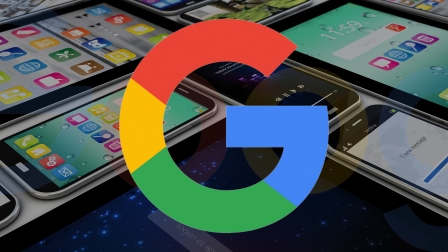Now that Google is officially testing a mobile-first index, columnist Ryan Shelley believes it’s well past time to get aboard the mobile-friendly train. Here, he provides some tips to get you started.

Google has started testing its mobile-first index. This new index will look first at the mobile version of your website for its ranking signals and fall back on the desktop version when there is no mobile version.
Google has been slowly moving toward a mobile-first index for quite a while now. Google first hinted at their intentions of a mobile-first index about a year ago, but November 4 was the first time Google has posted details about the mobile-first index on their own blog.
So if you have been slow in joining the mobile revolution, now is the time to take action. As mobile continues to dominate search, Google and the other search engines are going to place more and more emphasis on mobile.
Here are five steps you can take to optimize your site for Google’s mobile-first index.
1. Speed
In Google’s Site Performance for Webmasters video (below), Developer Programs Tech Lead Maile Ohye, states that “two seconds is the threshold for e-commerce website acceptability. At Google, we aim for under a half-second.” Users have come to expect websites to load fast, and so does Google. Making sure your site loads fast is essential to ranking on mobile. Here are a few things to consider when optimizing your page speed.
- Optimize images. Large images can slow down a site. Optimizing images to be the correct size is a great quick win.
- Minify code. This is the process of removing all unnecessary characters from source code without changing its functionality.
- Leverage browser caching. Browser caching stores web page resource files on a local computer when a user visits a web page.
- Reduce redirects. Too many redirects can cause the site to have to reload and slows down the experience.
2. Don’t block CSS, JavaScript or images
In the early days of mobile design, blocking these elements was helpful. They often caused more issues and made the site drag. Today this is no longer true.
Smartphones are, in many cases, more powerful than the computers owned by users. They can handle nearly anything we throw at them. The smartphone GoogleBot can also handle them and wants to be able to see and categorize the same content that users do. So make sure that you don’t hide them.
3. Mobile design
SEO has really transitioned from a technical skill to an art. Today’s SEO has to know and understand more than just code and ranking signals; they have to know how to use design to influence rankings.
Mobile design is an art form in and of itself. In my opinion, responsive design is the best way to go, but no matter your process, here are some tips to optimize mobile site design for search.
- Never use Flash. Apple killed Flash for mobile. Since many mobile users can’t view Flash elements on their phones, you need to remove them. It’s better to use HTML 5 or Java to add your extra cool elements.
- Get rid of pop-ups. Lead generation is important, but if your mobile site is overloaded with pop-ups, you’re going to frustrate your users, and they will leave. This will guarantee a higher bounce rate and decreased rankings. So just dump your pop-ups on mobile.
- Design for “the finger.” Since your mobile users have to navigate with their finger, make sure your design is “finger-friendly.” Accidental taps are annoying, so make sure they can scroll and tap with ease.
4. On-page optimization
When it comes to mobile SERPS (search engine results pages), you have less room to work with. So make sure that you keep your titles and descriptions concise and to the point.
This will help the GoogleBot understand your page faster, as well as give the user a better understanding of who you are. This will lead to a higher click-through rate and improved rankings.
5. Local optimization
In September, Google released “Possum,” a massive update to the local search algorithm. Mobile search is crucial for businesses looking to drive foot traffic into their stores. Google’s research into local search behavior shows that local searchers are ready to take action.
In this report, they show that “50 percent of consumers who conducted a local search on their smartphone visited a store within a day, and 34 percent who searched on a computer/tablet did the same.” Local businesses have much to gain from the mobile-first index.
Here are a few things you should implement to increase your mobile visibility:
- City and state in the title tag
- City and state in the H1 heading
- City and state in the URL
- City and state in content
- City and state in the alt tags
- City and state in the meta description
- Business Name, Phone and Address
We still have a lot to learn as Google furthers their experiment with their mobile index. But by taking action now, you can help make the case for your site and improve your visibility in mobile search.
Don’t wait until the switch to mobile-first indexing is “official.” Now is the time for action.
[Article on Search Engine Land.]
Some opinions expressed in this article may be those of a guest author and not necessarily Marketing Land. Staff authors are listed here.
Marketing Land – Internet Marketing News, Strategies & Tips
(17)






